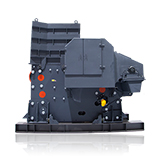Construction Waste Mobile Crusher: Types & Benefits
Construction waste, also known as construction and demolition (C&D) waste, is a significant environmental concern worldwide. With rapid urbanization and infrastructure development, the volume of waste generated from construction, renovation, and demolition activities continues to rise. Traditional disposal methods, such as landfilling, are unsustainable and contribute to pollution and resource depletion.
Mobile crusher has emerged as an efficient solution for recycling construction waste on-site, reducing transportation costs, and minimizing environmental impact. These machines are designed to crush concrete, bricks, asphalt, and other debris into reusable aggregates, promoting a circular economy in the construction industry.
This article provides an in-depth analysis of mobile crushers for construction waste, covering their types, working principles, benefits, applications.

1. What is a Construction Waste Mobile Crusher?
The construction waste mobile crusher is a portable, high-capacity machine designed to crush and recycle construction waste on-site. It is a remarkable combination of crushing equipment, conveyor belts, and screening equipment, all integrated into a mobile unit. This integration allows for the seamless transition of waste from the demolition phase to the recycling phase, reducing the need for multiple machines and operators.
2. Advantages of Using Mobile Crushers for Construction Waste
One of the key benefits of the construction waste mobile crusher is its mobility. It can be easily moved to different construction sites, thus enabling on-site recycling of construction waste. This eliminates the need for transporting waste to a separate recycling facility, which can be both time-consuming and costly. Moreover, on-site recycling reduces the environmental impact of waste transport and disposal.
2.1 Mobility
- Mounted on wheels or tracks for easy relocation between job sites.
- No need for fixed infrastructure, ideal for temporary projects.
2.2 Versatile Crushing
- Can handle various materials: concrete, bricks, tiles, wood, metal, and asphalt.
- Adjustable settings for different output sizes (e.g., 0-20mm, 20-40mm).
2.3 Efficient Sorting & Separation
- Some models include magnetic separators to remove rebar and metal.
- Screening options to separate fine and coarse aggregates.
2.4 Environmentally Friendly
- Reduces landfill waste by recycling materials.
- Lowers carbon footprint by minimizing transportation.
2.5 Cost-Effective
- Lowers disposal fees and landfill taxes.
- Produces reusable materials, reducing the need for virgin aggregates.
3. Types of Mobile Crusher for Construction Waste
Mobile crushers are categorized based on their crushing mechanisms and mobility. The most common types include:
3.1 Jaw Crusher
- Function: Primary crushing of large construction debris.
- Features: High crushing ratio, adjustable discharge size, robust structure.
- Applications: Demolition waste, reinforced concrete, bricks.
3.2 Impact Crusher
- Function: Secondary crushing, producing finer aggregates.
- Features: High-speed rotor, impact plates, suitable for softer materials.
- Applications: Asphalt, tiles, gypsum, and mixed C&D waste.
3.3 Cone Crusher
- Function: Tertiary crushing for high-quality aggregates.
- Features: Precise particle size control, suitable for hard materials.
- Applications: Crushed concrete for road base or structural fill.
3.4 Hammer Crusher
- Function: Crushing brittle materials with high impact force.
- Features: Simple structure, high efficiency, but higher wear rate.
- Applications: Glass, ceramics, and lightweight concrete waste.
3.5 Combined Mobile crushing and screening
- Function: Combined crushing and screening in a single unit.
- Features: Integrated vibrating screens for immediate material classification.
- Applications: On-site sorting of mixed construction waste.
4. Working Principle of Construction Waste Mobile Crusher
Mobile crushers operate through a series of mechanical processes:
- 1. Feeding: Construction waste is loaded into the crusher via an excavator or loader.
- 2. Crushing: The material is broken down by compression (jaw crushers), impact (impact crushers), or shear (cone crushers).
- 3. Screening (Optional): Some models include built-in screens to separate different aggregate sizes.
- 4. Discharge: Processed materials are conveyed to stockpiles or directly into trucks for reuse.
Advanced models feature automation, remote control, and real-time monitoring for optimized performance.
5. Applications of Mobile Crusher in Construction Waste Recycling
5.1 Demolition Projects
- Crushing concrete, bricks, and steel-reinforced structures.
- Reusing materials for new foundations or road bases.
5.2 Road Construction
- Recycling asphalt and concrete into sub-base materials.
- Reducing the demand for natural aggregates.
5.3 Urban Redevelopment
- Processing mixed C&D waste in confined spaces.
- Supporting green building certifications.
5.4 Disaster Debris Management
- Rapid processing of earthquake or hurricane debris.
- Facilitating reconstruction efforts.
6. Key Considerations When Choosing a Mobile Crusher
6.1 Material Type and Hardness
- Jaw crushers for hard materials (concrete, stone).
- Impact crushers for softer debris (asphalt, tiles).
6.2 Production Capacity
- Small projects: 50–100 tons/hour.
- Large-scale demolition: 200+ tons/hour.
6.3 Mobility and Transport
- Track-mounted vs. wheel-mounted options.
- Weight and dimensions for road transport compliance.
6.4 Automation and Control Systems
- Remote monitoring for efficiency.
- Automated feed control to prevent blockages.
6.5 Maintenance and Durability
- Wear-resistant components (manganese steel jaws, impact plates).
- Easy access for servicing.
Mobile crusher plays a pivotal role in sustainable construction waste management by enabling on-site recycling, reducing landfill dependency, and lowering carbon footprints. With advancements in automation, electrification, and smart technology, these machines are becoming more efficient and environmentally friendly.







